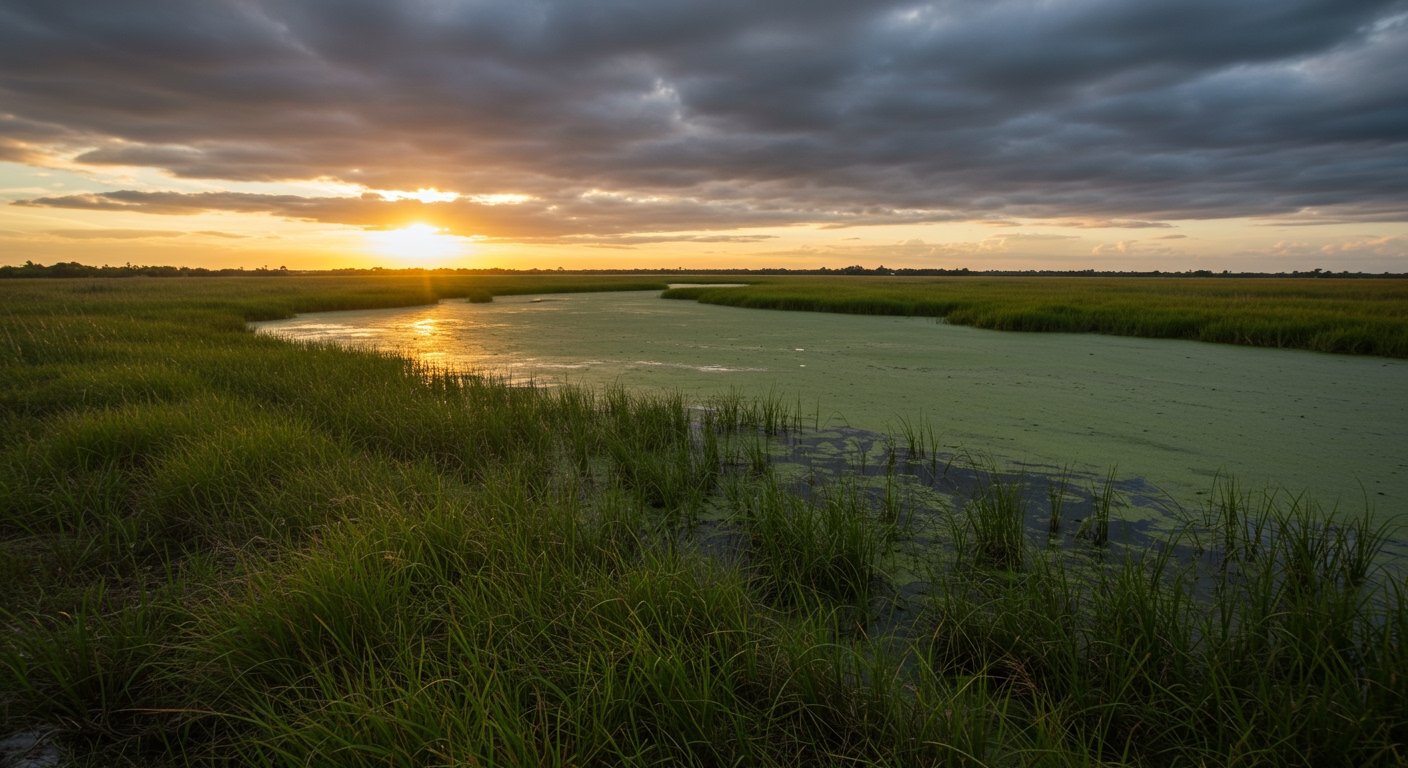A recent editorial from the Miami Herald, updated on July 8, 2025, has drawn attention to the critical state of the Florida Everglades with its stark title: “A tour of depravity in the Everglades.”
This powerful designation by a leading regional news organization underscores the profound challenges facing this iconic and fragile ecosystem. While the provided information indicates that specific details regarding the nature of this “depravity” or the particular points elaborated upon in the editorial were not available in the referenced search snippets, the headline itself serves as a potent call for scrutiny.
The Everglades: A Unique and Threatened Landscape
The Everglades, often referred to as the “River of Grass,” is a sprawling wetland ecosystem covering central and southern Florida. It is one of the most diverse and complex ecosystems on Earth, a mosaic of sawgrass marshes, cypress swamps, hardwood hammocks, pine flatwoods, and coastal mangroves. This vast network of interconnected habitats provides critical services, including filtering water, recharging aquifers, protecting coastal areas from storms, and supporting an incredible array of wildlife, some found nowhere else.
For centuries, the Everglades has faced relentless pressure from human activity. Drainage projects initiated in the late 19th and 20th centuries aimed to reclaim land for agriculture and development, drastically altering the natural flow of water, which is the lifeblood of the system. This manipulation has led to habitat loss, reduced biodiversity, and increased vulnerability to pollution and invasive species.
Persistent Challenges and Environmental Strain
The issues plaguing the Everglades are manifold and interconnected. Water quality remains a significant concern, with agricultural runoff introducing excess nutrients like phosphorus and nitrogen, leading to harmful algal blooms that devastate aquatic life. Altered hydrology, resulting from canals, levees, and water control structures, has fragmented habitats and disrupted natural cycles of wet and dry seasons.
Invasive species, such as the Burmese python, lionfish, and melaleuca tree, outcompete native species and disrupt food webs, posing an existential threat to the ecosystem’s delicate balance. Development continues to encroach upon the Everglades’ boundaries, further reducing habitat and increasing the strain on resources. Climate change adds another layer of complexity, contributing to rising sea levels that push saltwater into freshwater marshes and exacerbate extreme weather events.
Interpreting “Depravity” in the Environmental Context
The Miami Herald’s use of the term “depravity” to describe a “tour” through the Everglades suggests a strong condemnation of actions or conditions observed within the ecosystem or related to its management and fate. While the precise focus of the editorial is not detailed in the summary, such a term in this context could refer to a variety of serious issues. These might include, but are not limited to:
* Willful Neglect: A failure by authorities or stakeholders to adequately protect the ecosystem despite clear evidence of harm and available solutions.
* Corruption or Mismanagement: Instances where decisions regarding land use, water management, or restoration funding are influenced by unethical practices or incompetence, leading to detrimental outcomes for the environment.
* Unsustainable Practices: The continuation of harmful agricultural, industrial, or developmental activities that knowingly degrade the ecosystem for short-term gain.
* Breakdown of Environmental Ethics: A perceived lack of moral regard for the intrinsic value of the natural world and the long-term consequences of its destruction.
Given the well-documented history of challenges and controversies surrounding the Everglades, a journalist might use such a term to highlight a culmination of detrimental factors, portraying the current state as a moral failing or a profound departure from responsible stewardship.
The Role of Journalism in Conservation
Editorials like the one published by the Miami Herald, and updated on July 8, 2025, play a crucial role in raising public awareness and fostering dialogue about complex environmental issues. A distinguished international news organization recognizes the power of the press to shed light on crises that might otherwise go unnoticed by the broader public or be downplayed by vested interests.
By using strong language, the Herald’s editorial aims to provoke a reaction, urging readers, policymakers, and stakeholders to confront uncomfortable truths about the state of the Everglades. Such journalistic interventions are vital for maintaining pressure on governments, corporations, and individuals to prioritize conservation and sustainable practices.
Looking Ahead: The Fight for Preservation
Efforts to restore the Everglades are among the largest and most complex environmental restoration projects in the world. Initiatives aim to undo the damage caused by decades of hydrological alterations, improve water quality, and protect remaining habitats. However, progress is often slow, hampered by funding challenges, political disagreements, and the sheer scale of the problems.
The editorial’s somber assessment suggests that despite these efforts, the situation remains critical, perhaps even deteriorating in certain aspects. The phrase “a tour of depravity” implies a journey through the consequences of past mistakes and ongoing failures.
Conclusion
The Miami Herald editorial, “A tour of depravity in the Everglades,” updated on July 8, 2025, serves as a stark reminder of the significant issues related to the Everglades. While the specific instances driving this characterization are not available in the provided summary, the headline itself demands attention. It suggests a landscape grappling with severe environmental damage, potentially linked to human actions or inactions that the editorial deems profoundly harmful or morally questionable. The fate of the Everglades remains a critical test of our commitment to environmental stewardship, and the attention brought by powerful journalistic pieces is indispensable in the ongoing fight for its preservation.





